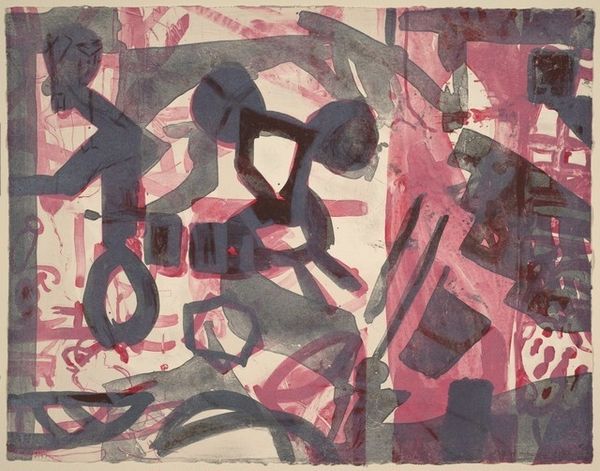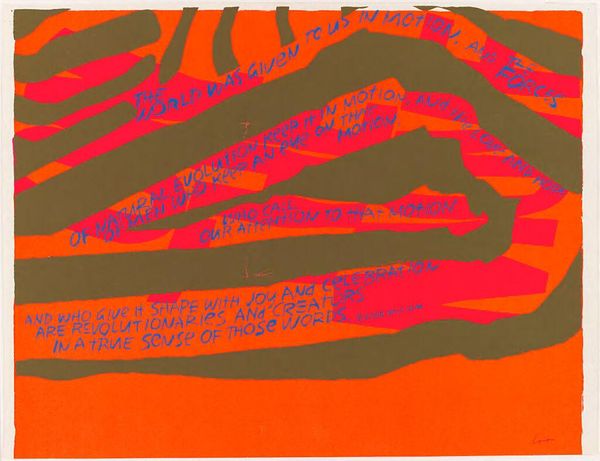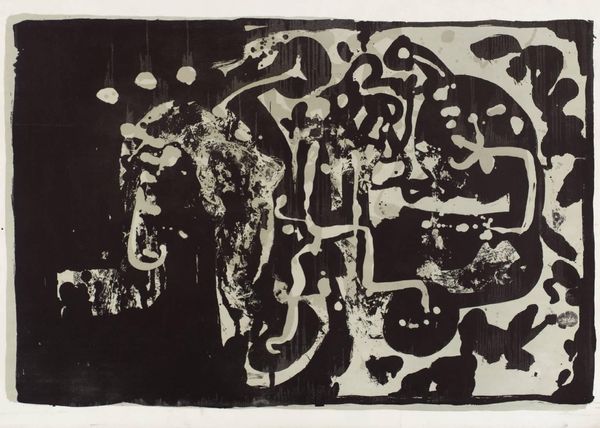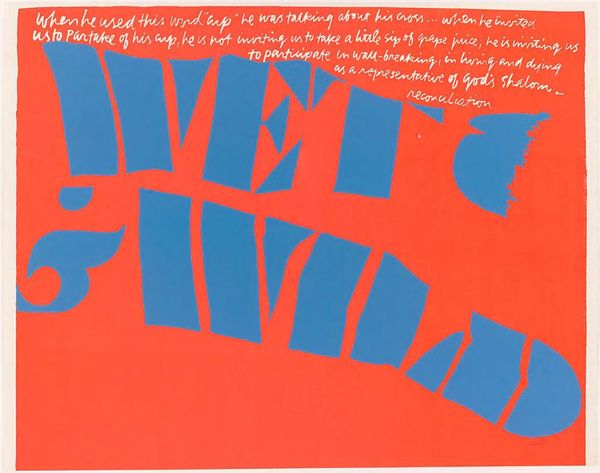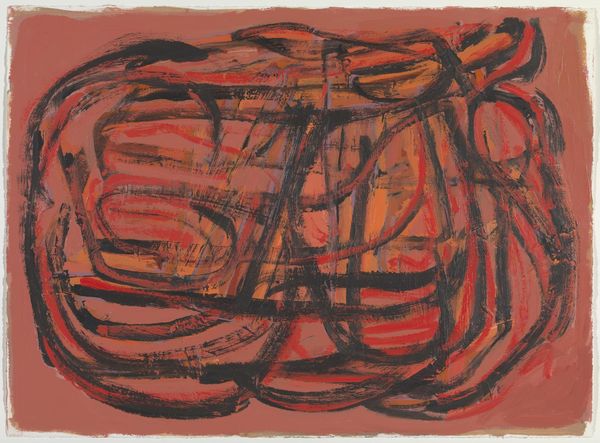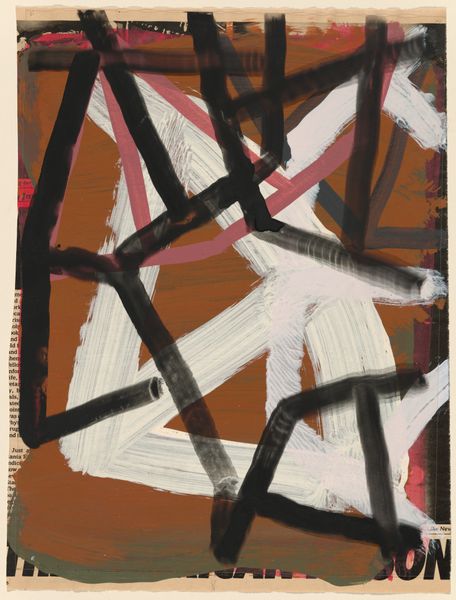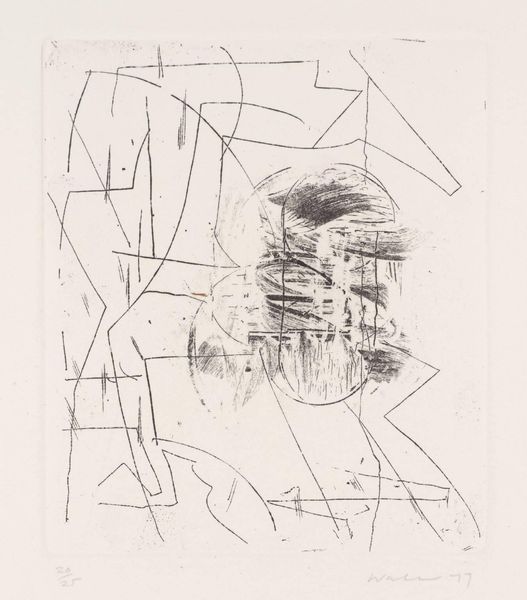
painting, oil-paint
#
abstract-expressionism
#
abstract expressionism
#
painting
#
oil-paint
#
geometric
#
abstraction
Copyright: Adolph Gottlieb,Fair Use
Curator: Standing before us is Adolph Gottlieb's 1950 oil painting, "Night Forms," a powerful example of abstract expressionism. Editor: Well, first impression: it feels like staring into the abyss, but in a cozy, sort of sepia-toned way. A very well-organized abyss, I might add! Curator: The "organized abyss" is an interesting take. Gottlieb, alongside artists like Rothko and Newman, aimed to tap into primal emotions using abstract forms and universal symbols. There's a clear structure beneath the gestural strokes. Editor: I can see that. The grid peeking through lends it that structured feel. But, the geometric shapes dancing within – are they trying to escape the grid or happily confined within its logic? A pent-up frustration, maybe? Or joyous order? Curator: Abstract Expressionism arose during a period marked by anxieties from WWII and the Cold War. Gottlieb utilized a visual language, a set of codified shapes to communicate emotion and concepts. Circles might symbolize totality, squares representing containment. Editor: Aha! The containing square. I can definitely sense that in the painting! So, those intense blacks, browns, and ochres – these colors seem significant? Are they a personal code of sorts? Curator: Gottlieb himself stated his imagery referenced psychological and mythological sources. Colors, composition, everything functions as a carefully considered signifier. The juxtaposition of dark forms against small spots of vibrant red-orange seems particularly meaningful here, evoking a hidden energy struggling to surface. Editor: It feels so deliberate. Yet there's also something primitive about it, as though painting it allowed some very old sensation or understanding to rise up. What do you suppose people, a hundred years from now, will make of this? Will our current anxieties even translate? Curator: That's the exciting enigma about abstract art; it mirrors and speaks to evolving cultural and psychological landscapes. Though the context of 1950 may fade, the elemental human emotions embedded here will likely still resonate. Editor: Nicely put! Now, I just see an oddly cheerful abyss. No, wait – scratch that; I think it is annoyed about being trapped in the grid! Or maybe that’s just me. Anyway, that’s all to reflect about. Curator: Yes indeed, a powerful piece which showcases, the ways artists work within a context, expressing internal states with primal forms.
Comments
No comments
Be the first to comment and join the conversation on the ultimate creative platform.
